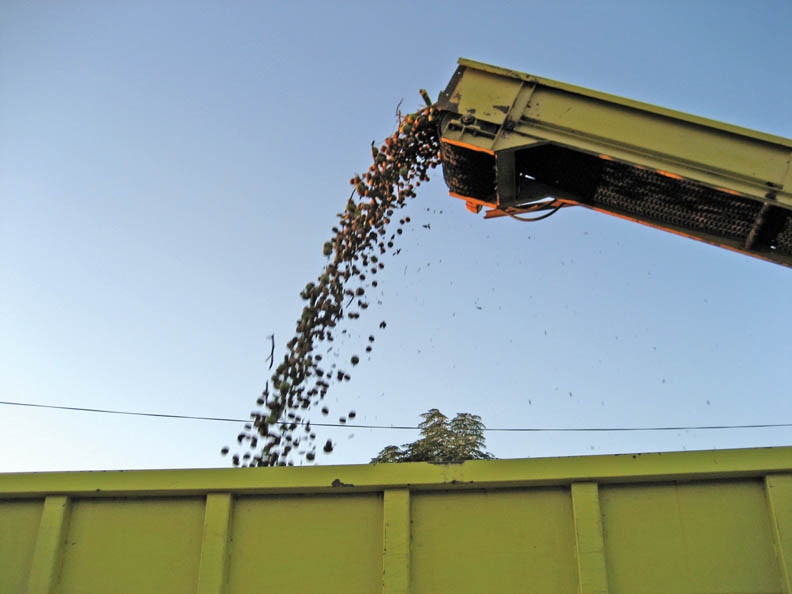August 29, 2012

Some walnut orchards experienced dramatic nut drop in June and July due to walnut blight. Vina orchards seem to be the worst affected, but orchards of other varieties also saw significant disease and crop loss.
Two aspects of this problem are interesting and provide some clues to the possible causes and suggest corrective actions that should be considered in the future:
• Disease incidence and severity is highly variable. Even for hard-hit varieties like Vina or Serr, some orchards have very little blight and some have a lot. This suggests that differences in blight severity among blocks have as much or more to do with differences in management and weather than with varietal susceptibility.
• The majority of dropped nuts have blight lesions that appear to have originated from “end blight” where the initial infection occurred at the blossom end of the nut. End blight infections are more typically the result of early season (March and April) infection events from bacteria overwintering in buds whereas “side blight” lesions tend to occur when later season (May and June) rain events move bacteria around from previously infected nuts to others. End blight infections are also much more likely to spread to the kernel (and eventually cause the nut drop) than side blight. These observations suggest that the heavy drop we are seeing had more to do with conditions and blight control programs in place early in the season than later.
So, what went wrong this year and what can be done better next year?
Inoculum levels were very high with record rainfall levels in the spring of 2011. This set the stage for the spring of 2012 when weather conditions were wet and favorable to disease from leaf-out of most varieties through the end of April. Orchards lacking an effective protective copper spray residue any time during this period were at risk of disease development.
Research and experience have shown that “an effective protective copper spray residue” include:
• Using one of many available and effective copper-containing blight control products at rates (copper rates vary by formulation) shown to be effective. Application rates on the high end of the range permitted by the label give the best disease control.
• Tank-mixing copper with Manzate fungicide (mancozeb) in all applications. High levels of bacterial copper resistance have now been documented in many walnut districts, orchards, and varieties. As currently understood, copper-resistant walnut blight bacteria have an enhanced ability to protect them-selves by “pumping out” copper ions that penetrate cell membranes. Manzate disrupts cell membranes, overcoming this protective mechanism.
• Beginning a program of regular blight applications early when pistillate flower emergence occurs. Research has shown the benefits of initiating protective sprays when bud break has proceeded to a point when 20-40 percent female flowers are visible or when emerging shoots have reached the “prayer stage” of elongation. Adding an earlier “bud-break” or even catkin emergence treatment of copper+mancozeb plus a bud-penetrating surfactant to kill bacteria over-wintering inside buds has been shown in some trials to provide some benefit, especially in high pressure situations, i.e. when the overwintering bud populations are high and in-season weather conditions are favorable to disease.
• Maintaining an effective copper+mancozeb residue throughout the time when weather conditions favor disease. Remember that copper stays on the tissue to which it is applied: Shoots and nuts that emerge and/or expand after an application are unprotected until copper is applied to them in the next application.
• Using full orchard sprays for each application. Alternate row spraying, even in (increasingly rare) cases where growers really do manage to get back within a few days to treat the other rows, likely results in a considerable number of flowers/nuts with less-than-optimal copper residues, providing a window for in-creased population build-up, nut infection and promotion of copper resistant strains in the bacterial population.
You May Also Like




